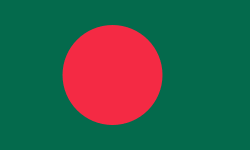Narayanganj District (Narayanganj)
Narayanganj had the same history as much of the rest of the Dhaka area. Formerly ruled by the Palas and Senas, the region became part of the Muslim Bengal Sultanate in the 14th century. Sonargaon, capital of Bengal during the reign of Isa Khan, is in the district. Later the region was taken over by the Mughals as the Bengal Subah. The district is named after Bicon Lal Pandey, a Hindu religious leader who was also known as Benur Thakur or Lakshmi Narayan Thakur. Pandey acquired ownership of the region from the British East India Company in 1766 after the Battle of Plassey. He declared the marketplaces on the banks of the Shitalakshya river as endowed property to pay for expenses for the worship of Narayan. Subsequently, the region was named Narayanganj.
* Important developments
* The post office was established in 1866.
* The Narayanganj municipality was officially founded on 8 September 1876.
* Dhaka–Narayanganj telegraph service was set up in 1877.
* Telephony was introduced by the Bank of Bengal in 1882.
It grew in importance in the seventeenth and eighteenth century, due to the influx of the Portuguese and the English. The first to develop was the west bank of Shitalakshya. Narayanganj only became important in the nineteenth century, when the Rally Brothers started a company exporting jute to the west in 1830, aided by a company from Assam. By 1908, 18 European companies, and two Indian companies were trading in jute from Calcutta.
With the formation of Pakistan in 1947, the economy transformed from being mainly a jute production to include jute milling due to the location of most existing jute mills in India. This followed the establishment of a number of mills in and around Narayanganj that gave the local economy a great boost.
During the War of Independence, the Pakistan Army massacred 139 people in Fatulla Thana on 29 November 1971. Eight days earlier, members of the freedom fighters fought the Pakistan Army in which one fighter was killed.
Map - Narayanganj District (Narayanganj)
Map
Country - Bangladesh
 |
 |
| Flag of Bangladesh | |
The official language is Bengali, one of the easternmost branches of the Indo-European language family.
Currency / Language
| ISO | Currency | Symbol | Significant figures |
|---|---|---|---|
| BDT | Bangladeshi taka | ৳ | 2 |
| ISO | Language |
|---|---|
| BN | Bengali language |
| EN | English language |















